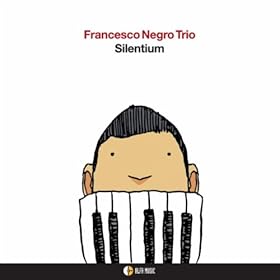
first International Jazz Day.
Jazz has defied almost every attempt at definition. The music critic John Fordham
may have captured it best when he described the music of Miles Davis as “the
sound of the skipped heart-beat, the caught breath, the sudden smile.”
Jazz is music of boundless creativity. Mixing composition and improvisation, the
formal and informal, it renews itself every time it is played. Born in the United
States, jazz is owned by the world. Rooted in African traditions and drawing on
European musical forms, it has taken on new shapes in cultures across the globe.
Jazz makes the most of the world’s diversity, effortlessly crossing borders and
bringing people together.
Jazz has been a force for positive social transformation throughout its history, and it
remains so today. This is why UNESCO created International Jazz Day. From its
roots in slavery, this music has raised a passionate voice against all forms of
oppression. It speaks a language of freedom that is meaningful to all cultures. The
same goals guide UNESCO in its efforts to build bridges of dialogue and
understanding between all cultures and societies. We work with governments and
societies and also with artists, including Herbie Hancock, UNESCO Goodwill
Ambassador. Making the most of cultural diversity is a task we all share.
This is why this first International Jazz Day will be celebrated with concerts across
the world, from Muscat to Moscow, Yerevan to Havana, Paris and New York to New
Orleans. Each of these concerts will display the power of jazz to enhance human
Message from Ms Irina Bokova,
Director-General of UNESCO
on the occasion of the International Jazz Day 30 April 2012
Why International Jazz Day?
Jazz breaks down barriers and creates opportunities for mutual understanding and tolerance;
Jazz is a vector of freedom of expression;
Jazz is a symbol of unity and peace;
Jazz reduces tensions between individuals, groups, and communities;
Jazz fosters gender equality;
Jazz reinforces the role youth play for social change;
Jazz encourages artistic innovation, improvisation, new forms of expression, and inclusion of traditional music forms into new ones;
Jazz stimulates intercultural dialogue and empowers young people from marginalized societies.
PROGRAMME:
Friday, 27 April 2012 - UNESCO Headquarters, Paris
This programme may be subject to modification
Opening of the first International Jazz Day:
10.00 – 10.30, Miró Halls
By Irina Bokova, Director-General of UNESCO, and Herbie Hancock, UNESCO Goodwill Ambassador
Events all day long
Live coverage by French Paris TSF JAZZ radio
Photo exhibitions by the Smithsonian’s National Museum of American History and Philippe Lévy-Stab (Miró Halls)
Duke Ellington photo exhibition by the Maison du Duke in partnership with the Académie du jazz, France (Foyer)
Screening of photo montage by Blue Note Records (Foyer)
Montreux Jazz Lounge
Hosted by the Montreux Jazz Festival, with screening of legendary performances (Pas Perdus Room)
PERFORMANCES:
10.15 – 14.00, Miró Halls
10.15 Tigran
11.00 Swan Berger
11.30 Riccardo Del Fra
12.00 Raphael Gualazzi
12.30 Hamid El Kasri
13.30 Paris Conservatory Sextet
14.00 – 17.00, Miró Halls
14.00 Berklee Global Jazz Institute
14.30 Ilham Al Madfai
15.00 Giovanni Mirabassi
16.00 Paul Lay and Helene Arntzen
16.30 Dominique Fillon
MASTER CLASSES/”RENCONTRES” AND DANCE DEMONSTRATION
Master Classes: morning
Room I
10.30 Herbie Hancock
11.00 Dee Dee Bridgewater
Room IV - LIMITED ACCESS (150 seats)
10.15 Ibrahim Maalouf
11.00 Hugh Masekela
12.00 Barbara Hendricks
Japanese Garden
11.15 Nicole Slack Jones "I Sing" for Babies
"Google Jazz Experiment"
12.00, Room II
Software programmers share their latest music inventions for recording, composition and visualization
Master classes: afternoon
Room II
14.30 Klaus Doldinger
16.30 Nicole Slack Jones "I Sing"
Room IV - LIMITED ACCESS (150 seats)
14.00 Marcus Miller
16.30 Biréli Lagrène and Lionel Loueke
Jazz and Dance Demonstration
14.30, Foyer
By Fabien Ruiz, choreographer of the film "The Artist"
Hosted by the Académie du jazz (France)
JAZZ TALKS
10.30 – 12.30, Room II
“Jazz and Cinema: Great Stories of an Old Couple”
Hosted by the Académie du Jazz, featuring:
Bertrand Tavernier, Film Director
Vladimir Cosma, Soundtrack Composer
François Lacharme, President of the Académie du Jazz, Paris
Julien Delli Fiori, Director of FIP radio station
Thierry Jousse, Radio Producer, Director and Film Critic
John Edward Hasse, Curator of American Music, Smithsonian Institution
14.30-15.30 Room X
“Jazz as a Voice of Liberty – its Role in the Struggle for Democracy” Hosted by the Permanent Delegation of Germany to UNESCO, featuring:
Martina Nibbeling-Wrießnig, Ambassador, Permanent Delegate of Germany to UNESCO - Moderator
John Edward Hasse, Curator of American Music at
the Smithsonian Institution’s National Museum
of American History
Daniel Konrad, Jazz Expert (Czech Republic)
Rainer E. Lotz, Jazz Expert (Germany)
Nicolas Pflug, President Blue Note Records
Tomasz Tluczkiewicz, Jazz Expert (Poland)
15.30, Room IV - LIMITED ACCESS (150 seats)
“Global Jazz and Peace”, by Danilo Perez and Wayne Shorter
Live from New York City
Organized by the Berklee Global Jazz Institute
FILMS AND SCREENINGS
13.00, Room II
“ Round Midnight” by Bertrand Tavernier
13.00, Room IV - LIMITED ACCESS (150 seats)
Film and Jazz Performance
"Latif", silent film, with the Salman Gambarov & Bakustic Jazz
15.30, Room II
Projection of the 1976 concert of Nina Simone in Montreux
Presentation by Claude Nobs
REHEARSAL FOR THE EVENING CONCERT
12.00 – 16.00, Room I - LIMITED ACCESS
Open for observation
Tania Maria
Marcus Miller
Hugh Masekela
Biréli Lagrène
EVENING CONCERT: "HERBIE HANCOCK & FRIENDS"
20.00 – 21.30, Room I - LIMITED ACCESS
Live retransmission by Arte Live Web on www.unesco.org
This programme may be subject to modification
Opening of the first International Jazz Day:
10.00 – 10.30, Miró Halls
By Irina Bokova, Director-General of UNESCO, and Herbie Hancock, UNESCO Goodwill Ambassador
Events all day long
Live coverage by French Paris TSF JAZZ radio
Photo exhibitions by the Smithsonian’s National Museum of American History and Philippe Lévy-Stab (Miró Halls)
Duke Ellington photo exhibition by the Maison du Duke in partnership with the Académie du jazz, France (Foyer)
Screening of photo montage by Blue Note Records (Foyer)
Montreux Jazz Lounge
Hosted by the Montreux Jazz Festival, with screening of legendary performances (Pas Perdus Room)
PERFORMANCES:
10.15 – 14.00, Miró Halls
10.15 Tigran
11.00 Swan Berger
11.30 Riccardo Del Fra
12.00 Raphael Gualazzi
12.30 Hamid El Kasri
13.30 Paris Conservatory Sextet
14.00 – 17.00, Miró Halls
14.00 Berklee Global Jazz Institute
14.30 Ilham Al Madfai
15.00 Giovanni Mirabassi
16.00 Paul Lay and Helene Arntzen
16.30 Dominique Fillon
MASTER CLASSES/”RENCONTRES” AND DANCE DEMONSTRATION
Master Classes: morning
Room I
10.30 Herbie Hancock
11.00 Dee Dee Bridgewater
Room IV - LIMITED ACCESS (150 seats)
10.15 Ibrahim Maalouf
11.00 Hugh Masekela
12.00 Barbara Hendricks
Japanese Garden
11.15 Nicole Slack Jones "I Sing" for Babies
"Google Jazz Experiment"
12.00, Room II
Software programmers share their latest music inventions for recording, composition and visualization
Master classes: afternoon
Room II
14.30 Klaus Doldinger
16.30 Nicole Slack Jones "I Sing"
Room IV - LIMITED ACCESS (150 seats)
14.00 Marcus Miller
16.30 Biréli Lagrène and Lionel Loueke
Jazz and Dance Demonstration
14.30, Foyer
By Fabien Ruiz, choreographer of the film "The Artist"
Hosted by the Académie du jazz (France)
JAZZ TALKS
10.30 – 12.30, Room II
“Jazz and Cinema: Great Stories of an Old Couple”
Hosted by the Académie du Jazz, featuring:
Bertrand Tavernier, Film Director
Vladimir Cosma, Soundtrack Composer
François Lacharme, President of the Académie du Jazz, Paris
Julien Delli Fiori, Director of FIP radio station
Thierry Jousse, Radio Producer, Director and Film Critic
John Edward Hasse, Curator of American Music, Smithsonian Institution
14.30-15.30 Room X
“Jazz as a Voice of Liberty – its Role in the Struggle for Democracy” Hosted by the Permanent Delegation of Germany to UNESCO, featuring:
Martina Nibbeling-Wrießnig, Ambassador, Permanent Delegate of Germany to UNESCO - Moderator
John Edward Hasse, Curator of American Music at
the Smithsonian Institution’s National Museum
of American History
Daniel Konrad, Jazz Expert (Czech Republic)
Rainer E. Lotz, Jazz Expert (Germany)
Nicolas Pflug, President Blue Note Records
Tomasz Tluczkiewicz, Jazz Expert (Poland)
15.30, Room IV - LIMITED ACCESS (150 seats)
“Global Jazz and Peace”, by Danilo Perez and Wayne Shorter
Live from New York City
Organized by the Berklee Global Jazz Institute
FILMS AND SCREENINGS
13.00, Room II
“ Round Midnight” by Bertrand Tavernier
13.00, Room IV - LIMITED ACCESS (150 seats)
Film and Jazz Performance
"Latif", silent film, with the Salman Gambarov & Bakustic Jazz
15.30, Room II
Projection of the 1976 concert of Nina Simone in Montreux
Presentation by Claude Nobs
REHEARSAL FOR THE EVENING CONCERT
12.00 – 16.00, Room I - LIMITED ACCESS
Open for observation
Tania Maria
Marcus Miller
Hugh Masekela
Biréli Lagrène
EVENING CONCERT: "HERBIE HANCOCK & FRIENDS"
20.00 – 21.30, Room I - LIMITED ACCESS
Live retransmission by Arte Live Web on www.unesco.org

+(1).JPG)





 1. Beautiful Love
1. Beautiful Love 







